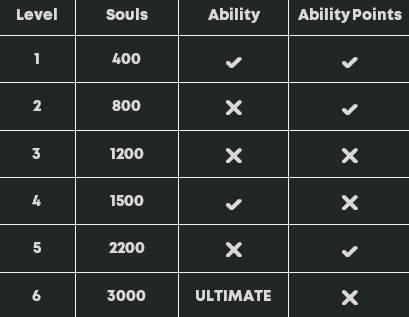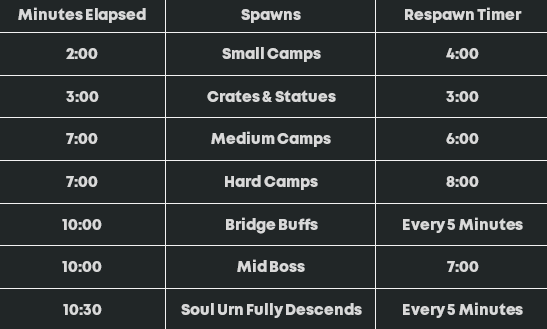5 Tips To Get You Through Laning Phase In Deadlock (And Into High MMR)
Learn how to optimize your laning phase in Valve’s latest game Deadlock and reach even higher MMR.
Learn how to optimize your laning phase in Valve’s latest game Deadlock and reach even higher MMR.
Valve’s Deadlock is a complex engine with a lot of moving parts. It’s normal to feel overwhelmed even after learning the fundamentals of the game. If you want to climb and play with the best, it’s up to you to learn its intricacies.
The laning phase, especially, sets the pace for the rest of the game, and you’ll want to maximize your team’s advantages every opportunity you can. Becoming a great laner is a massive step on the road to achieving a high MMR. It is a crucial part of the game that sets the momentum going forward but losing a lane isn’t the be all and end all of a match.
In this article we’re going to outline five tips that are essential for the early laning phase in Deadlock.
If you’re not used to playing games that heavily value communication, such as CS:GO or Valorant, it might be a bit foreign to hear the voices of other players or use your own but make no mistake, Deadlock isn’t a one-man game, and there’s only so much information you can gleam without your team voice chat.
In a solo lane, there won’t be much to call, just your MIAs, your ganks, and if there’s an opportunity to gank your laning opponent.
In a duo lane, that’s when voice chat in lane really starts to matter. Obviously, we don’t want to flood voice, but here’s a list of things to keep in mind when you put that gaming headset to use:
Before laning even begins, consider if communicating for a lane swap would benefit the team. Judging by the few tournaments played so far and high MMR pugs, it’s likely the lane distribution will be 1-2-2-1 (once ranked releases).
Determine duo lanes by checking if a lane needs more: crowd control, poke, or wave push. Some heroes also benefit more from solo laning or duo laning and having appropriately strong duo lanes means guardians can naturally be pushed quicker and other lanes can be ganked sooner.
In a solo lane, a hero’s starting stats may innately counter one another’s while another hero’s default gun may have a rough time farming and denying against your opponent’s. Before the match even begins, take note of some match up quirks such as:
The more you play, the more you’ll learn smaller intricacies like these, as well as find different ways to counteract natural weaknesses and matchups. This matters in a duo lane but generally more so in solo lanes, since your ally laner might help offset whatever weaknesses your match up has.
It’s a perfect point in time to learn each hero’s popular ability point allocation route and what each upgrade actually does if you want to master matchups. Press tab often so you’re always up to date on your lane’s lethality. Below is a handy visual for when players get their abilities as well as their ability points.

Besides the power spikes heroes get from their levels and ability points, you’ll want to think about when your specific opponent comes online. It’s true every hero is stronger with their ultimate, but a lot of heroes have trouble confirming kills prior. Consider some of these facts and any you might notice along the way:
Some heroes power spike at different points in the game while others spike harder with certain items. And speaking of items...
Let’s start delving into the more advanced portion of buying items for your lane. Remember, if you’re building specifically for the lane, you’re generally a little bit weaker in teamfights so keep that in mind after the laning phase is over.
If you feel like you’re in a winning position, orange items are far more valuable than purple. More often than not, a hero’s gun is what does the most dps to obtain that early kill or grants you a soul lead.
Green items tend to give the most bang for your soul bucks early game. Regen like enduring spirit and extra regen will help you sustain in lane. Other items such as extra stamina will make laning versus heroes like Warden and Kelvin easier. Don’t be afraid to buy Healing Rite if you genuinely can’t miss out on a wave or don’t have a zipline boost but keep track of line of sight where you can farm without it being dispelled.
When you’re ahead enough, you’ll want items that snowball and extend your lead. Even when you’re too behind, consider buying items out of your hero’s build order based on game state. If you’re going to build them eventually, buying items out of order may present opportunities to press your advantage or catch back up, such as but not limited to:
It’s important to know when you’ve fallen behind in souls and won’t be able to find the resources to catch up because you can still help the team by transitioning to your team’s Curse, Knockdown, Rescue Beam, etc. holder so your carries can continue blasting. Also remember you can make unsecured souls permanent if you buy an item and refund it immediately.
If you want to learn more about specific itemization versus every hero, I suggest Deathy’s video linked here. There’s a lot of good guides out right now but I found his to be the most concise and accurate.
Knowing the spawns for jungle camps, crates, statues, and other timers means you can plan efficient routes and do some massive macro plays, gaining edge after edge over your enemies. It’s also important to memorize these timers to confirm when you should be hard shoving a lane to pick up a nearby camp or crate.

Heroes with good clear times may want to focus on small and medium camp respawns while Ivy and heroes that buy early boots or stamina want to keep track of Soul Urn timers. Carries should try to make time for bridge runes, they’re a 3000 soul value that doesn’t take up an item slot. Some ultimates are used to farm hard camps efficiently. Bebop, McGinnis, and Seven are prime examples of this, so timing your ultimate usage for tier 3 camps then teamfights is beneficial.
Lastly, a mistake people often make is prioritizing jungle camps rather than a wave pushing against you. Shoving a trooper wave is not only usually more farm but it’s momentum for your team. Try to make use of the space given to you by shoving and catching waves before jungling.
Deadlock isn’t a game for lone wolves. You get to a point in MMR when good players need a good team and insane aim helps far less than the smarts to back it up. MOBAs require a lot of tactful thinking and game knowledge but the end results are extremely satisfying. Great players will try to min-max every advantage in and out of the game, working smarter instead of harder.
Be fast, be efficient, be resourceful, and I’ll see you in Ranked.